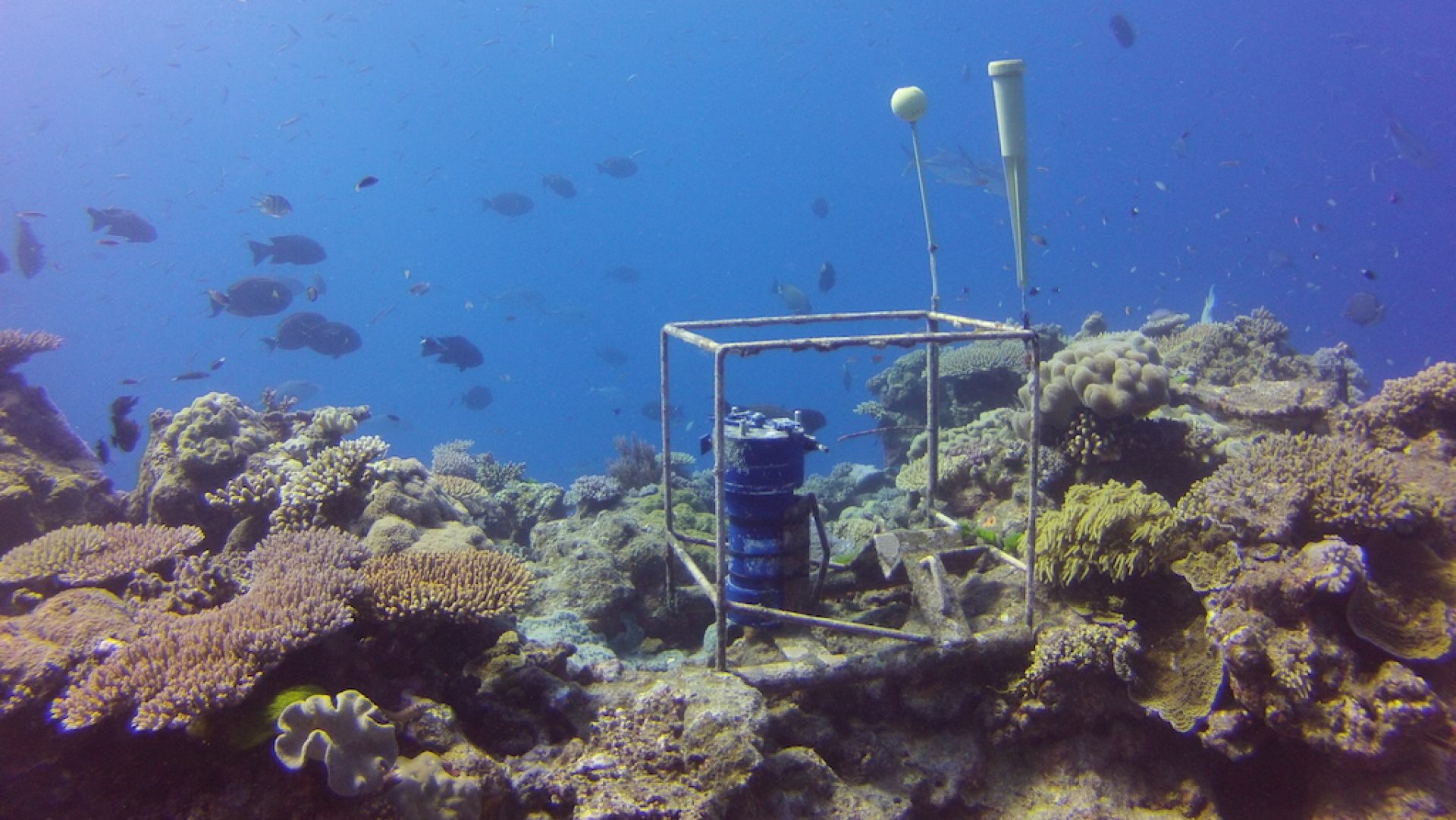Nephelometer
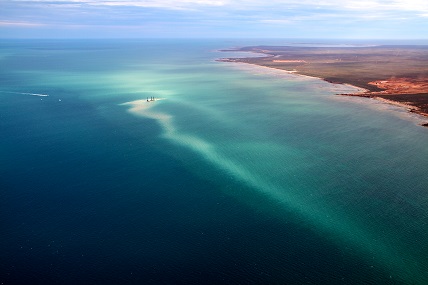
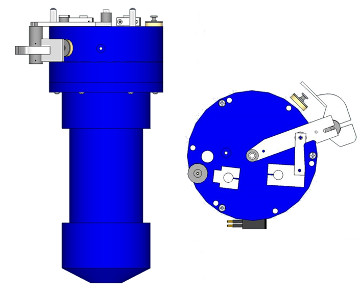
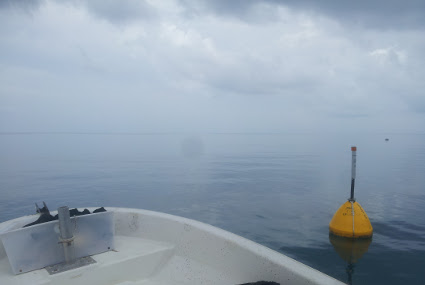
The Nephelometer, designed by the Marine Geophysics Laboratory, measures sediment deposition, turbidity, water depth, RMS water depth, water temperature and photosynthetically active radiation. Combining specifically designed sensors with a programmed Campbell’s Scientific 1000 data logger the Nephelometer measures and logs these marine physical parameters for extended field deployments. A rugged housing, mechanical sensor wipers and the ability to provide telemetered data result in an invaluable monitoring instrument in any marine monitoring study.
Turbidity
The turbidity sensor provides data in nephelometric turbidity unit’s equivalent (NTUe) and can be calibrated to suspended sediment concentration (SSC) in mg/L (Larcombe et al. 1995). The sensor is located on the side of the logger, pointing parallel to the sea floor. The sensor measures the backscatter of light that has been generated by an LED and transmitted through a fibre optic bundle. The backscatter probe takes 250 samples in an eight second period to attain an accurate turbidity value. The logger has been programmed to take these measurements at 10 minute intervals. The sensor interface is cleaned by a mechanical wiper at a two hour interval allowing for long deployment periods where bio-fouling would otherwise seriously affect readings.

Suspended sediment concentration (mg/l) data time series from a deployed nephelometer

Nephelometric Turbidity Unit equivalent (NTUe) data time series from a deployed nephelometer
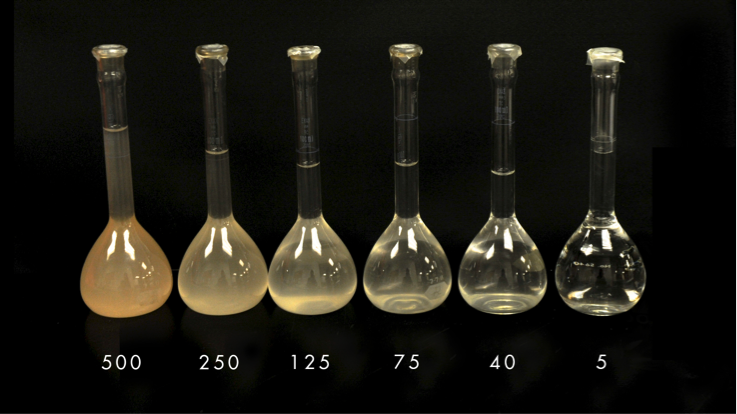
Decreasing NTU water samples. Image source: https://thesummitregister.com/comparing-your-water-treatment-options-part-2/
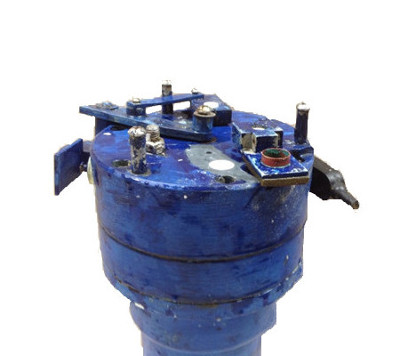
Nephelometer: sensor wipers and deposition cup
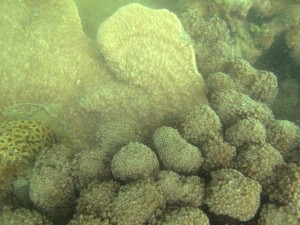
Corals at Middle Reef, Townsville Australia. Image source: http://eatlas.org.au/content/middle-reef-coral-status-and-trends-1993-2009-aims-ltmp

Time series of deposition and RMS water height data showing deposition events in the calmer periods following wave events.
Sediment deposition
Deposition is recorded in accumulated suspended sediment deposition (ASSD) (mg/cm2). The sensor is wiped clean of deposited sediment at a 2 hour interval to reduce bio-fouling and enable sensor sensitivity to remain high. The deposition sensor is positioned inside a small cup shape (16mm diameter x 18mm deep) located on the flat plate surface of the instrument facing towards the water surface. Deposited sediment produces a backscatter of light that is detected by the sensor. Deposited sediment is calculated by subtracting, from the measured data point, the value taken after the sensor was last wiped clean. This removes influence of turbidity from the value and re-zeros the deposition sensor every 2 hours.
If a major deposition event is in progress, the sensor reading will increase rapidly and will be considerably above the turbidity sensor response. Gross deposition will appear as irregular spikes in the data where the sediment is not removed by the wiper but by re-suspension due to wave or current stress. When a major net deposition event is in progress the deposited sediment will be removed by the wiper and the deposition sensor reading will fall back to a value similar to the turbidity sensor. The data will have a characteristic zigzag response as it rises, perhaps quite gently, and falls dramatically after the wipe (see Ridd et al., 2001).
Deposition data is provided as a measurement of deposited sediment in mg/cm2 and as a deposition rate in mg/cm2/day. The deposition rate is calculated over the 2 hour interval between sensor wipes and averaged over the day for a daily deposition rate. The deposition rate is useful in deposition analysis as it describes more accurately the net deposition of sediment by smoothing spikes resulting from gross deposition events.
Pressure
A pressure sensor is located on the horizontal surface of the water quality logging instrument. The pressure sensor is used to determine changes in water depth due to tide and produce a proxy for wave action. Each time a pressure measurement is made the pressure sensor takes 10 measurements over a period of 10 seconds.
The average water depth can be used for the analysis of the effect of tide and water depth on turbidity, deposition and light levels. The RMS water height shows short term variation in water depth and is therefore an indication of wave action. RMS water height can be used to analyse the link between wave re-suspension and SSC.

Water depth data - tide patterns

RMS water height - representative of wave energy

Temperature data set - seasonal and daily variations
Water temperature
Water temperature values are obtained with a thermistor that records every 10 minutes. The sensor is installed in a bolt that protrudes from the instrument and gives sensitive temperature measurements.
Photosynthetically Active Radiation
A PAR sensor, positioned on the horizontal surface of the water quality logging instrument, takes a PAR measurement at ten (10) minute intervals for a one second period. To determine total daily PAR (mol photons m2/day) the values recorded are multiplied by 600 to provide of PAR for a 10 minute period and then summed for each day.

PAR data set - 10 minute data and total daily PAR
Services & Instrument Hire
If you are interested in the Marine Geophysics Laboratory Nephelometers for commercial or research projects and/or have any further questions please don't hesitate to contact us. Indicate the number of instruments, intended deployment duration and telemetry requirements (live or daily data updates available) and we will be able to provide you with an estimated quote.
Specifications
Ranges
Turbidity: 0 – 3500 NTU
Deposition: 0 – 20 mg/cm2
Light: 0 – 2000 μE/m2/s
Pressure: 0 – 50 mH2O
Temperature: - 0 – 70 °C
Accuracy
Turbidity ± 2% or 0.3 NTU
Deposition ± 5%
Light: ±8 μE/m2/s
Pressure: ± 0.1 mH2O
Temperature: ± 0.2°C
Sensitivity
Turbidity: 0.005 NTU
Deposition: 0.008 mg/cm2
Light: 0.005 μE/m2/s
Pressure: 0.005 mH2O
Temperature: 0.01°C
General
Maximum Depth: 50 m
Data Rate: programmable (usually 1 scan every 10 minutes)
Input Voltage: 10 - 15 V
Deployment Period: Typically 1 – 6 months
Operating Wavelength: 940 nm
Housing Material: PVC
Height: 409 mm
Diameter: 170 mm
Connector: 4 pin, low profile, wet pluggable Subconn/Impulse type connector
Battery Pack: 9 × D Cell Alkaline Batteries
